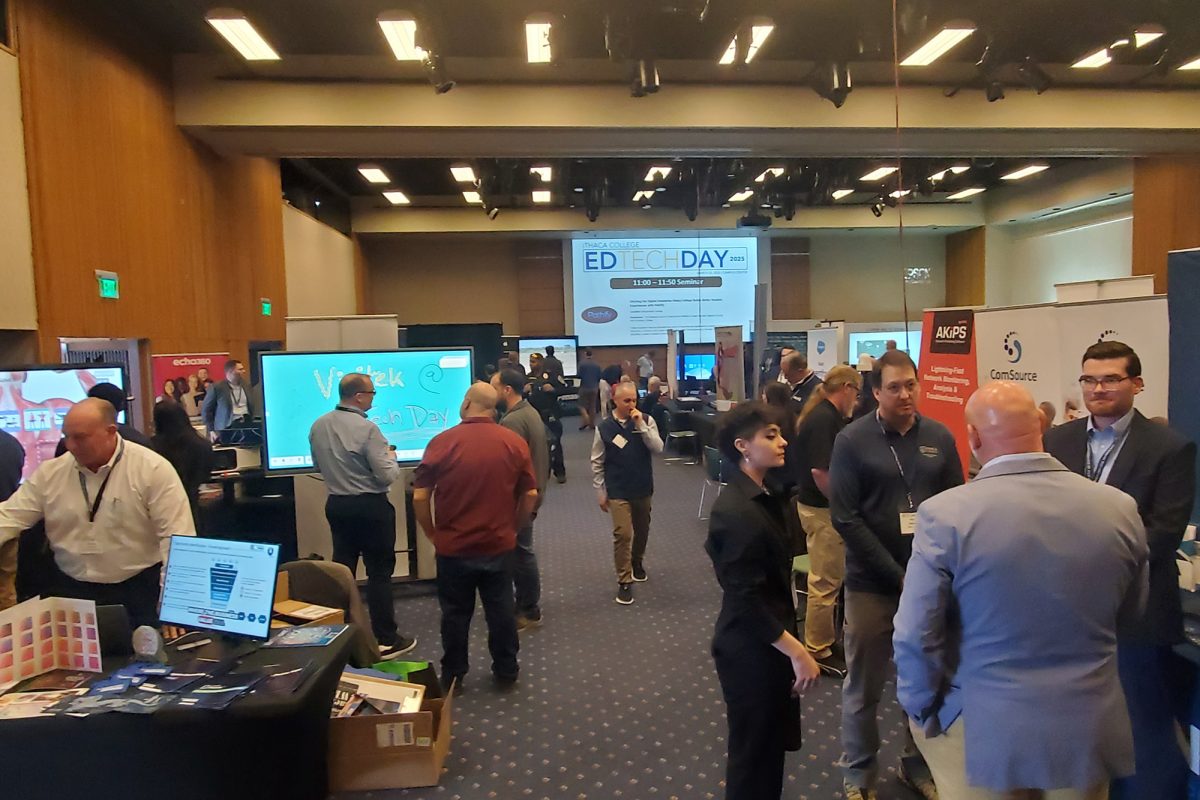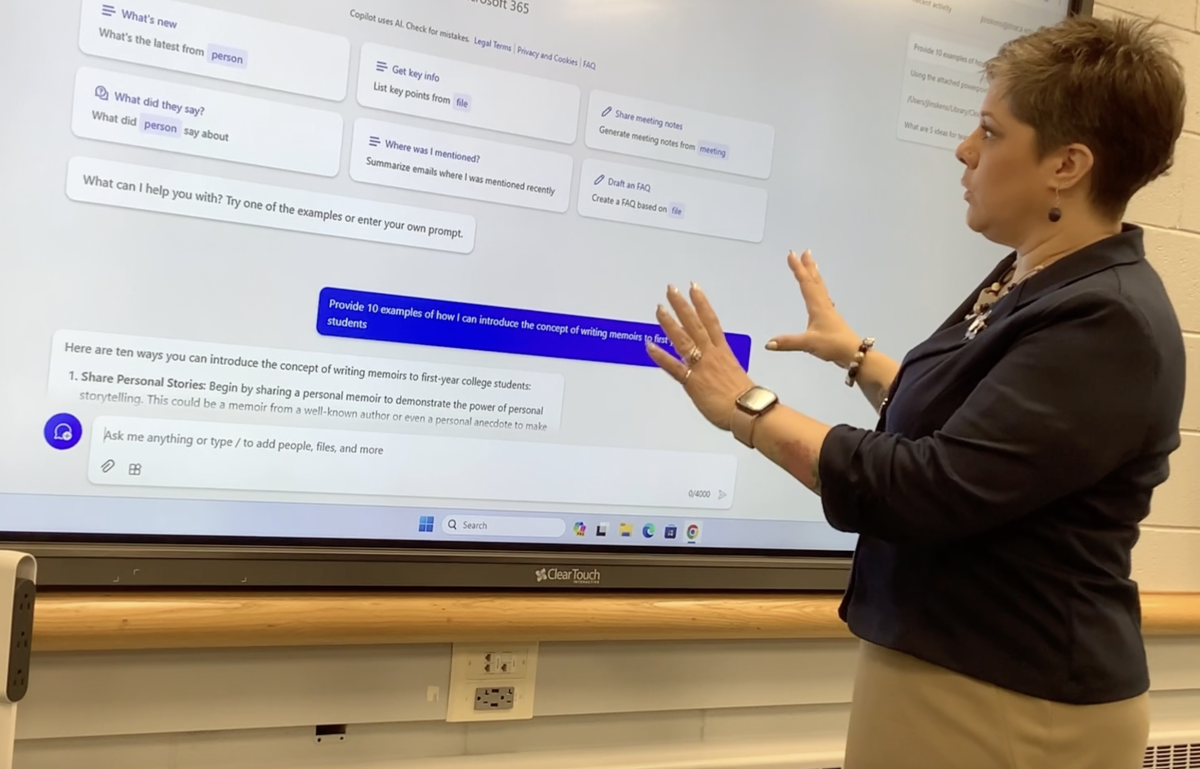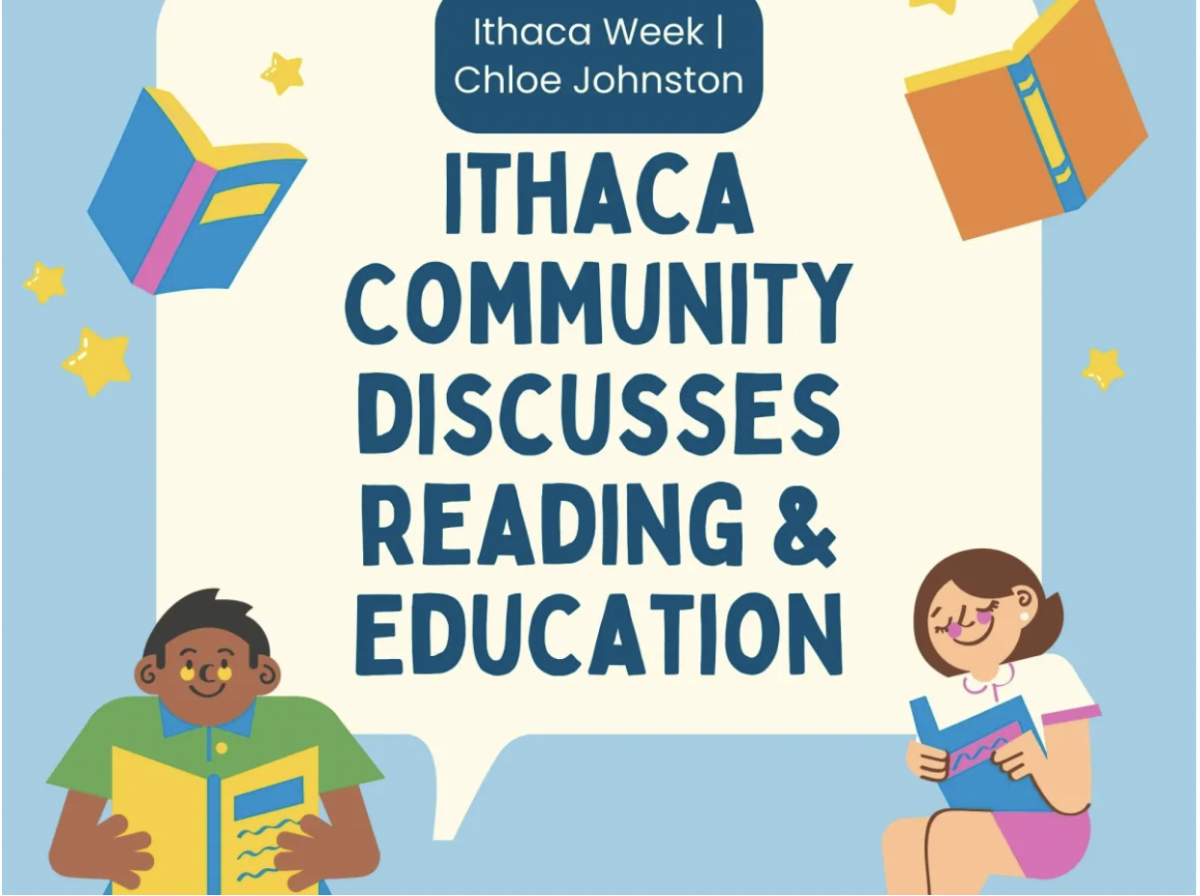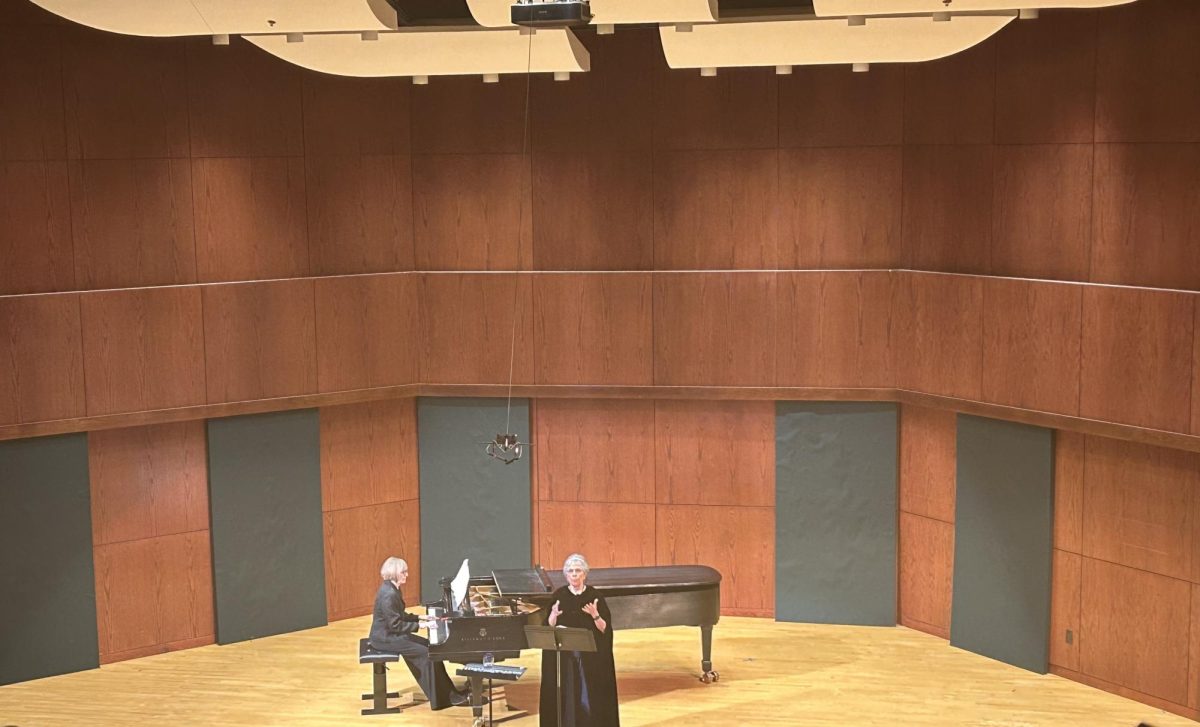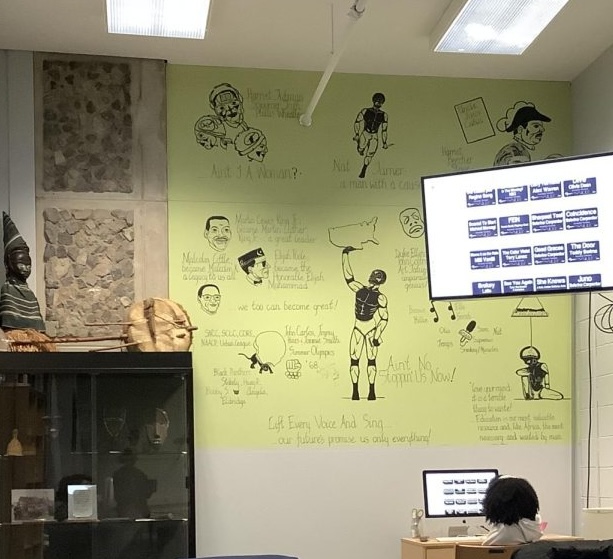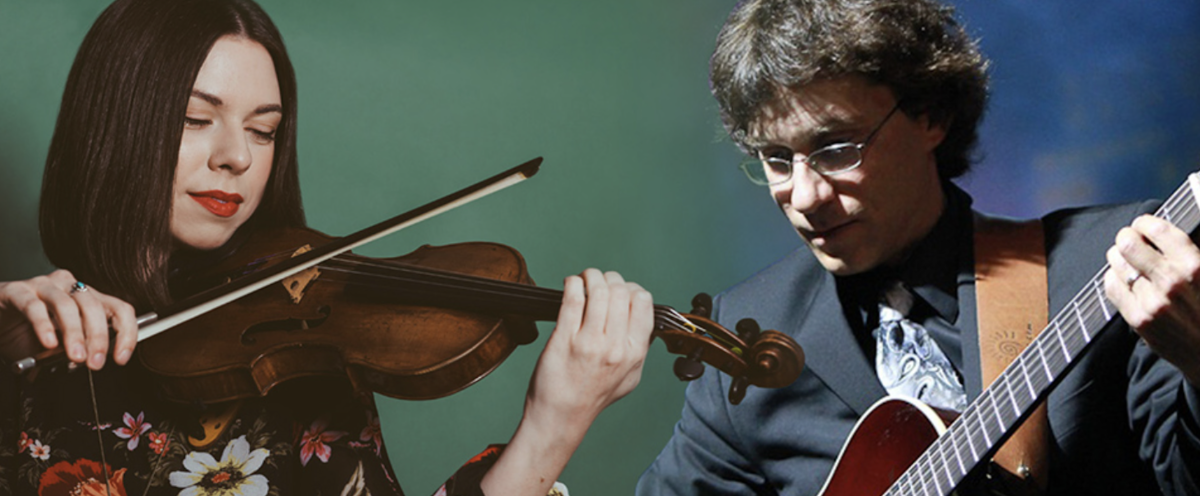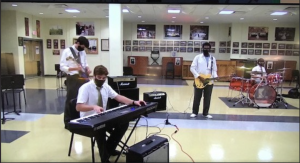
While Bruce Engel directed a group of viola students how to play a section of the classic Christmas song “Sleigh Ride,” music filled the air, until an abrupt sound came from Engel’s computer. Students watching his class at home through Google Classroom could not hear any of the music or what Engel was saying.
Engel, the director of music at St. Anthony’s High School in South Huntington, New York, typically can be found in the basement of the school, conducting a group of students as they play string, woodwind and brass instruments.
“Before the virus, I would meet with 75 to 85 students at a time and have a rehearsal, with all of us playing together,” Engel said. “Now, I only get to work with my students in groups of 10 or less. We haven’t even rehearsed together as a full group once this year because of safety restrictions.”
Engel is one of thousands of music teachers across the country who are adapting to hybrid teaching models implemented in schools due to the COVID-19 pandemic. Though this learning method allows students to attend classes from the safety of their home in order to slow the spread of the coronavirus, remote instruction has been difficult for music teachers, whose expertise is in a profession that typically involves large groups of people performing in small spaces.
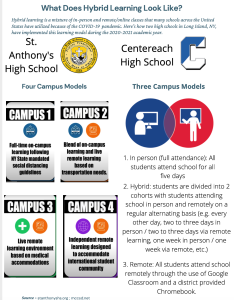
A sour note
As the first wave of COVID-19 hit the United States, Engel and other teachers in the music department at St. Anthony’s High School were preparing for their spring concert, previously scheduled for April 2020. When the school initially closed in March 2020 because of the virus, Engel said that at the time, he expected that the school’s spring concert would still happen.
“As these things progressed, I still thought we were going to do the spring concert because we were pretty ready for it early on,” Engel said. “I had such big plans for the concert; we were going to combine the symphonic band with the school’s bagpipe group and perform a piece that I arranged. But as the virus got more serious and the school shutdown kept on getting extended, I realized that this was not going to be possible.”
Though St. Anthony’s High School was completely remote until the end of the school year in June 2020, the school is now using a hybrid model. Additionally, the school has implemented COVID-19 safety guidelines across campus, such as social distance markers, one way hallways and staircases, shortened class periods and a longer bell schedule to accommodate for students getting to and from classes through phases.
The music program at St. Anthony’s has taken additional steps to maintain safety protocols during the COVID-19 pandemic. Students who are members of the school’s chorus must stand six feet apart and wear masks while singing, while instrumental students must sit 8 to 12 feet apart, and if they play a string instrument, piano or the drums, wear a mask.
Brother Joshua DiMauro, an assistant principal at St. Anthony’s, has been the school’s choral music director for 35 years. Though DiMauro said he enjoys being able to see his students in person after a long quarantine period, teaching music during this time has been a strange experience.
“My pedagogy has always been that you need to stand shoulder to shoulder with people you sing with, so that the musical vibrations travel from one kid to the next,” DiMauro said. “This experience has kind of shattered all of my schooling and pedagogy. It makes it more individual, which we’re dealing with, but it’s a very different experience.”
This has been a similar experience in public school choirs, such as the men and women’s choirs at Centereach High School in Centereach, NY. Brian Hough, the director of the men and women’s choir, said that the guidelines put in place have made it difficult for him to conduct classes normally.
“I only get to see my kids twice a week, and when I do, they’re 12 feet away from each other with their masks on,” Hough said. “Sometimes, I’ll have 20 or 30 kids in the auditorium and they’re all 60 or 70 feet away from each other. It’s hard to hear whether or not they’re singing in the right key or how their voices blend together when we’re all so far away.”
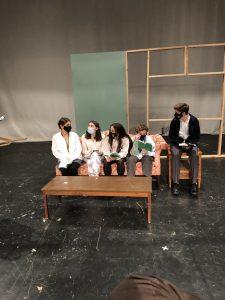
Finding a better tune
At St. Anthony’s High School, their administration has implemented an iPad education program, through which all students and teachers receive a free iPad that allows them access to the Google Education Suite, Google Classroom, and Infinite Campus, a student portal where grades, assignments and other important academic information are posted.
DiMauro said that though it took him some time to learn how to use his iPad, the iPad program has made managing his choirs easier
“The simple thing of having music on iPads has really made life a lot easier,” DiMauro said. “I’ve got thousands of copies of music from throughout the years in file cabinets, and it’s a whole challenge. But now the kids come right in, they get right to it, and there’s no worrying about lost music because it’s all on their iPads. I’m excited to use more technology in the future.”
In addition to helping students and teachers transition into hybrid learning, music teachers are discovering new ways to keep performances alive. In June 2020, Hough helped to create an hour long virtual Broadway special, during which students at Centereach High School performed songs, dances and other clips from Broadway musicals. At St. Anthony’s High School, students in their concert band recorded and uploaded a performance on social media.
The school also uploaded a 35 minute video of students performing parts of the musical “Into the Woods,” which was originally scheduled to premiere in-person in March 2020, a week after COVID-19 forced the company to shut down rehearsals.
Robert Cordina, a social studies teacher and co-director of the theatre company at St. Anthony’s High School, said that he hopes schools will continue to adapt and put their students first.
“A lot of the life lessons I try to teach my kids inside and outside the classroom have changed, because there are new challenges and new lessons that all of us are still learning because of this past year,” Cordina said. “The fact that each student also because of this has their own set of unique challenges and circumstances is what makes it tough, but it’s also part of our jobs to help them grow. I think if I can keep my head above water and stay kind of true to who I am as an educator to the best of my ability, I’d be happy.”


